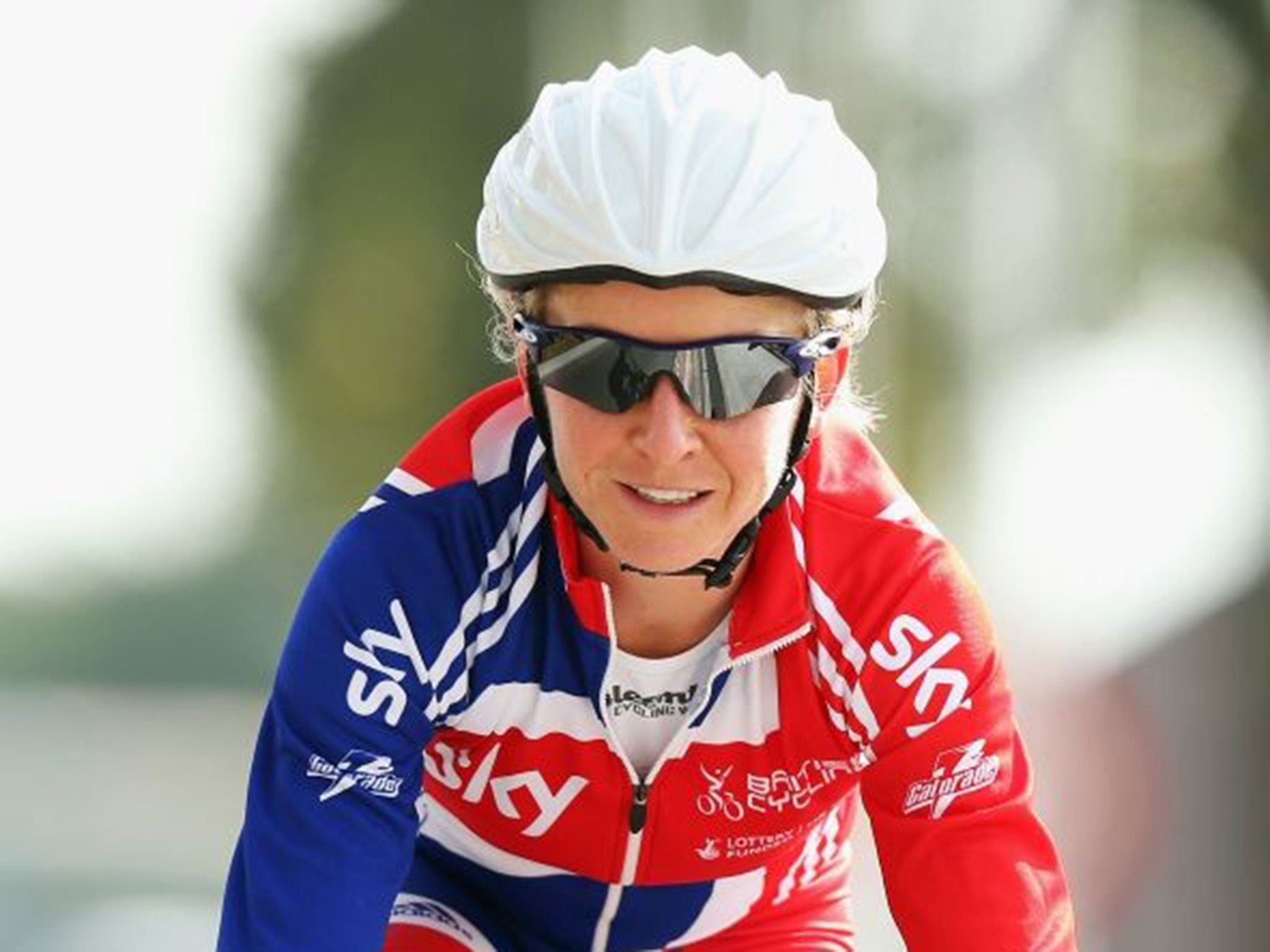Emma Pooley: La Course is watched by millions and that's why it's such a big deal
Women are a rapidly growing market and female cycling is an underdeveloped asset for media and sponsors

This year we're back in the Tour. A few hours before the peloton rolls into Paris for the finish line, I will be riding in the women's race on the Champs Elysées, La Course. This may confuse those who don't follow cycling too closely: what's so special about that? Isn't there a women's Tour de France? No, there isn't.
Women haven't raced on that iconic circuit round the Arc de Triomphe since the Tour Féminin (the women's equivalent of the Tour de France) quietly disappeared due to lack of sponsors several decades ago.
So what makes La Course such a big deal? It's not a Tour de Anything, let alone France. It's not the most challenging circuit on the women's calendar. It doesn't bring the winner a garish jersey, or a title, or even a medal. So why the fuss?
Audience. The Tour de France is watched by millions worldwide. Viewers who never normally watch cycling give up several hours every day for three weeks to watch this epic, emotional, painful, beautiful battle over three weeks. La Course will be shown on TV in 157 countries. That's a greater reach than any women's road race has ever had. Great for the women who race there, and their teams' sponsors, but also great for cycling fans.
We know women's cycling has appeal. The 2012 Olympic road race and this year's Tour of Britain were testament to this. Women's cycling has proved to be exciting, combative, compelling and entertaining; when viewers can watch it, they love it.
The problem is, race coverage is very patchy. But it's improving: the UCI now produce a highlights package from women's World Cup races, and the Giro Rosa was shown live on Italian TV. But it's still rare to be able to find a women's race on one of the major networks. Yet don't female cyclists deserve role models, just like the MAMILs [middle-aged men in Lycra] who worship at the altar of Wiggo and Cav? More pragmatically, women are a rapidly growing market and female cycling is an underdeveloped asset for media and sponsors.
ASO, the owners of the Tour, are to be commended for having the vision and leadership to stage La Course, but they are not putting on a women's race "to do the right thing". Nor should they. Women's sport does not need to be treated like a charity case. There is no moral or social obligation for ASO, a private company, to provide a Tour for women (unlike national and international governing bodies, which do have that mandate to encourage equal opportunity).
I believe ASO are genuine in their stated desire to promote women's cycling, but it needs a sustainable financial structure and they are taking a gamble on the first edition of La Course. I believe they've backed the right horse. It is a wonderful opportunity for ASO to expand their repertoire of top races, for the public to watch a fantastically entertaining race, and for we who are competing to show the world just how thrilling women's racing is.
I have to be honest: myself, and 97,285 other signatories to the "Le Tour Entier" petition last year, would love to see a full women's Tour de France. Why? Because I'm a cyclist, and I want the opportunity to compete in the toughest race in the world!
More to the point, why not? Can you imagine the London Marathon, or Ironman Kona, or Wimbledon tennis without the women's events on the same stage? There are gender inconsistencies in many sports, but few are as dramatic as in road cycling.
A women's Tour next year would be an impossible leap; the media coverage, fan base, sponsorship and professionalism of the women's sport has to develop gradually. But La Course is a radical step change in that development.
The final say will go to the audience: if the response is positive, the event will take off and other men's races will follow in having a women's version. La Course may be just a short race for the riders but it's a giant leap for women's cycling.
Emma Pooley won the Olympic time trial silver medal in 2008
Women in the Tour
La Course, today's women's stage in Paris, involves the riders completing 13 laps of a course running from the Arc de Triomphe, down the Champs Elysées to the Tuileries and back again in an 89km thrash. It is an attractive, tourist route, and largely symbolic, but the Tour may be finding its feminine side again.
The involvement of women has been marked by financial instability and interruptions. Yet the race once bore a far greater resemblance to the men's Tour. On its inauguration in 1984, the women's race lasted the full 21 days, crossing similar mountain passes to the men, but comprised only 15 stages and with the opening sections cut shorter and made flatter to fall in line with UCI rules on women's racing. But the race was cancelled in 2004, and returned the following year with five stages – then four in 2009 – before it was dropped for financial reasons.
Teddy Cutler
Subscribe to Independent Premium to bookmark this article
Want to bookmark your favourite articles and stories to read or reference later? Start your Independent Premium subscription today.

Join our commenting forum
Join thought-provoking conversations, follow other Independent readers and see their replies